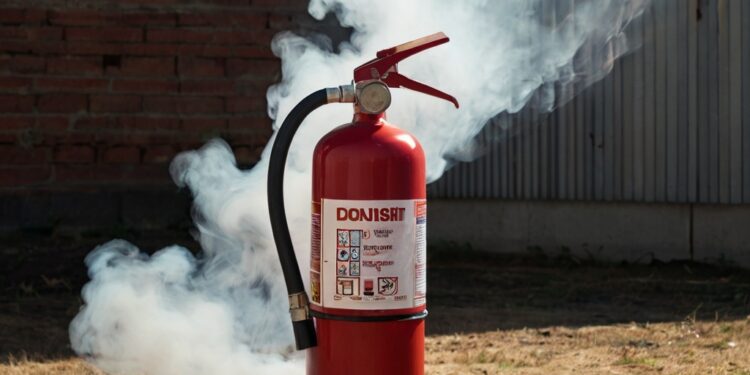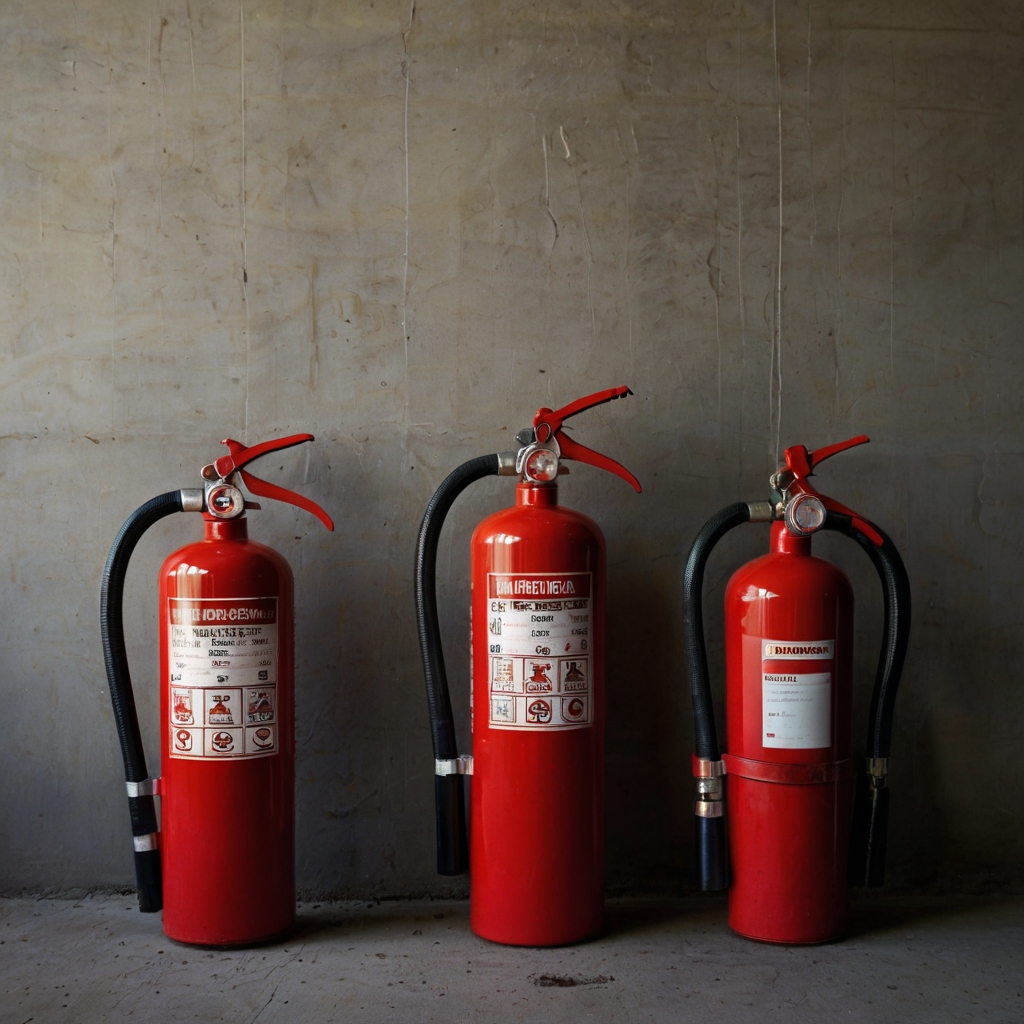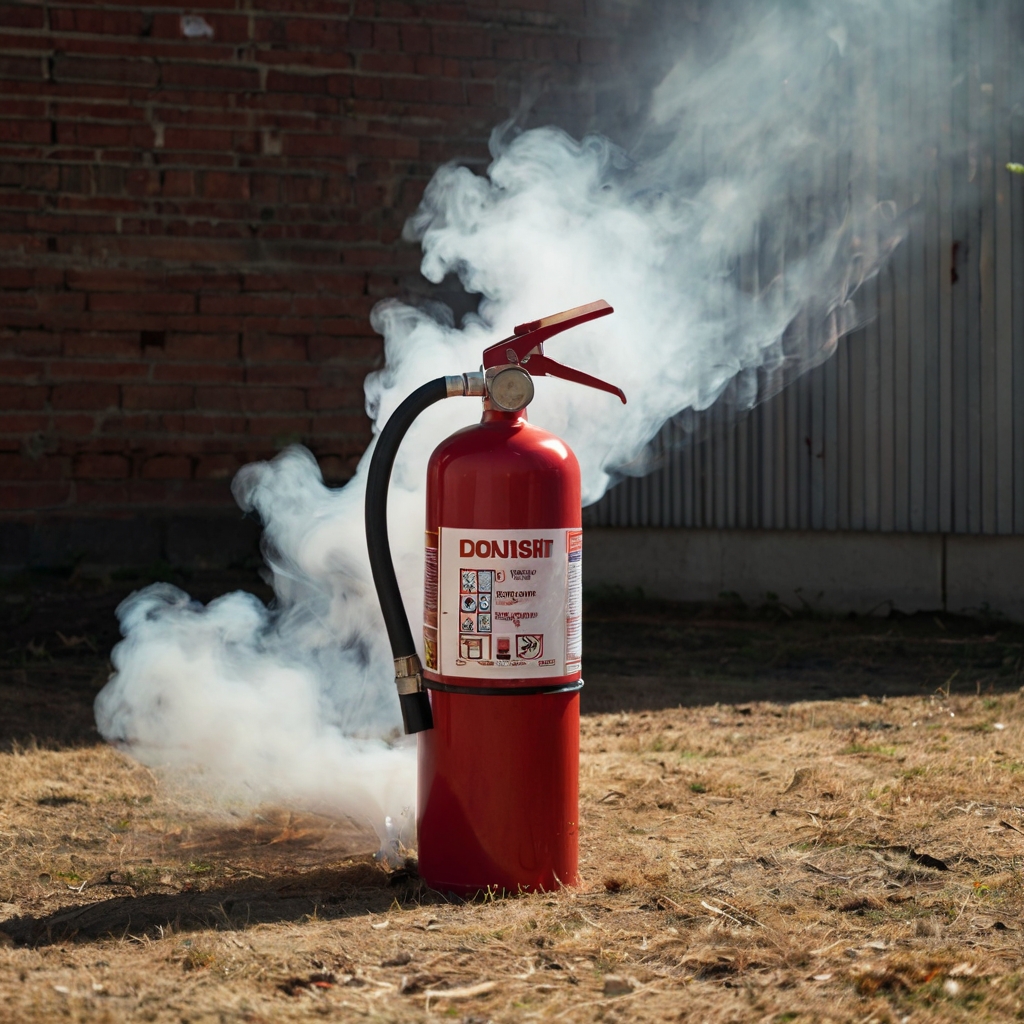Do Fire Extinguishers Expire

Fire extinguishers don’t last forever, yet many people don’t think about their expiration until they need one. These vital safety devices have limited lifespans that need regular checks. Safety experts say most fire extinguishers last 10 to 12 years from when they’re made. The actual lifespan changes substantially based on type and how well you maintain them.
Disposable fire extinguishers usually work for 10 to 12 years. CO2 extinguishers need refurbishment or replacement after 10 years. Your fire extinguisher can last up to 20 years with proper care and regular inspections. These big differences in lifespan make it crucial to understand expiration dates and proper maintenance for safety at home and work. Most people buy new units instead of fixing expired ones since prices are pretty close. This piece gets into everything about fire extinguisher expiration dates, maintenance needs, and the right time to replace them.

Table of Contents
- 1 What does it mean for a fire extinguisher to expire?
- 2 How long do fire extinguishers last before they expire
- 3 How to check if your fire extinguisher is expired
- 4 What happens if you use an expired fire extinguisher
- 5 Best practices for fire extinguisher maintenance
- 6 Summing all up
- 7 Here are some FAQs about if do fire extinguishers expire:
- 7.1 How do I know if the fire extinguisher is expired?
- 7.2 Is a 20 year old fire extinguisher still good?
- 7.3 What will happen if you use an expired fire extinguisher?
- 7.4 Can you use an out of date fire extinguisher?
- 7.5 How to tell if a fire extinguisher is bad?
- 7.6 Is an expired fire extinguisher better than nothing?
- 7.7 What do I do with my old fire extinguisher?
- 7.8 Can expired extinguishers still work?
What does it mean for a fire extinguisher to expire?
Fire extinguishers don’t have stamped expiration dates like food products. They become less effective as time passes due to pressure loss, chemical breakdown, or physical damage. A simple date won’t tell you if a fire extinguisher has “expired.”
The term “expired” refers to fire extinguishers that no longer work reliably during emergencies. This happens when extinguishers lose pressure, become undercharged, or their chemicals stop working effectively. Manufacturers don’t print expiration dates, but most units last 10-12 years.
Why expiration matters for safety
Expired fire extinguishers put lives at risk. A unit that’s undercharged or has lost pressure leaves people and property vulnerable during fires. Using a broken extinguisher wastes crucial evacuation time that could mean survival.
Expired units can become dangerous themselves. A tragic case from the Bahamas shows this – someone died when an expired extinguisher’s canister exploded during use. This whole ordeal highlights why working equipment matters so much.
Legal and insurance problems can arise from expired fire extinguishers. Local rules, state laws, and insurance policies require working units. You might face legal trouble or denied insurance claims after a fire if your equipment isn’t properly maintained.
How expiration is defined by NFPA and manufacturers
The National Fire Protection Association (NFPA) sets clear guidelines that define when fire extinguishers “expire”:
- Disposable (non-rechargeable) fire extinguishers need replacement every 12 years
- Rechargeable fire extinguishers need recharging every 6 years
- CO₂ extinguishers must be refurbished 10 years after manufacture
- P50 extinguishers need manufacturer refurbishment at 10 years and last 20 years total
Manufacturers offer their own guidance. A fire extinguisher that’s well-maintained could last 20 years, though most last 10-12 years. This longer lifespan depends on proper care and regular professional service.
Some fire extinguishers become obsolete as technology improves and rules change. The NFPA updates its guidelines regularly to identify which types should be retired regardless of their condition.
Professionals review expiration based on several factors:
- Visual signs of damage or corrosion
- Pressure gage readings outside the normal range
- Missing inspection records or maintenance history
- Physical damage to components like hoses or nozzles
- Manufacturer-specific guidelines for service life
You need to look beyond just dates to know if a fire extinguisher has “expired.” The full maintenance history, physical condition, and current safety standards all play important roles.
How long do fire extinguishers last before they expire
Fire extinguishers can last anywhere from 10 to 20 years based on their type, materials, and how well you maintain them. You need to understand these differences to keep your safety equipment reliable when emergencies strike.
Non-rechargeable extinguishers: 10–12 years
Non-rechargeable (disposable) fire extinguishers last 10 to 12 years from their manufacture date. You can’t refurbish these single-use units once they’re discharged. The manufacture date appears stamped into the metal, printed on the label, or marked on the bottom of the canister.
It’s worth mentioning that NFPA standards require you to replace disposable fire extinguishers every 12 years, whatever their use status. This rule exists because the pressure vessel and internal parts deteriorate even when the unit sits unused.
Safety experts recommend getting a new unit once a non-rechargeable extinguisher hits the 12-year mark. The cost difference between repairs and replacement is small compared to the safety benefits you get from a new unit.
Rechargeable extinguishers: up to 20 years with maintenance
Rechargeable fire extinguishers give you longer service life if you take care of them properly. These units start with a 10 to 12-year lifespan but can work much longer with the right maintenance.
Your rechargeable extinguisher needs:
- Full inspection and recharging every six years
- Immediate checks and recharging after use
- Professional service yearly
NFPA standards say rechargeable extinguishers need maintenance every 6 years. This six-year service goes beyond yearly inspections and includes checking internal parts and recharging the unit.
Most UL-listed rechargeable extinguishers can last indefinitely if you stick to the maintenance schedule. The schedule includes monthly checks, yearly maintenance, 6-year service, and 12-year maintenance from the manufacture date. The cycle starts over after the 12-year maintenance, which extends your extinguisher’s life.
CO2 extinguishers: 10-year refurbishment rule
CO2 extinguishers follow their own rules because of their special pressure vessels. These extinguishers need refurbishment or replacement after 10 years from manufacture if they still work well.
The 10-year point matters because CO2 extinguishers keep the fire-suppressing agent under high pressure without extra propellant. The pressure vessel might weaken as time passes, which could create safety risks.
These units also need hydrostatic testing every five years by regulation. This test makes sure the pressure vessel can safely hold its contents under pressure.
P50 extinguishers: 20-year lifespan with mid-life service
P50 extinguishers showcase newer technology with remarkable longevity. These composite fire extinguishers cost less and help the environment more than traditional steel models.
P50 extinguishers last 20 years with proper care, and this is a big deal as it means that they outlast steel models. You only need one manufacturer refurbishment at the 10-year mark.
P50 extinguishers stand out because they don’t need:
- Yearly service from outside contractors
- Discharge and refill after 5 years
You just need to do a yearly visual check that uses magnets to test indicators, which saves money. This innovative design comes with a 10-year quality guarantee covering material defects and workmanship.
The environmental benefits deserve attention too. P50 extinguishers reduce carbon footprints through UK manufacturing, 20-year durability, and no yearly third-party engineer visits.
Community safety programs and volunteer groups need to understand these different lifespans to maintain proper protection while managing tight budgets.

How to check if your fire extinguisher is expired
Your fire safety equipment needs regular checks to stay in working order. A fire extinguisher might look perfectly fine on the outside, but several signs can tell you if it will work in an emergency.
Finding the manufacture date
The manufacture date helps you calculate how long your fire extinguisher will last. You can find this important information in several spots:
- A two-digit or four-digit number stamped into the cylinder at the bottom
- The date printed right on the cylinder
- The date stamp hidden under the plastic ring around the neck or under the plastic boot
Kidde extinguishers show the manufacturing date as a number code. Take “1205322062” for example – the first four digits show the time on a 24-hour clock, the next three tell you the day of the year, and the last two reveal the year it was made.
First Alert puts their 4-digit manufacturing year in a small box near the UL logo. This date becomes crucial later when you need to know if it’s time to replace your extinguisher.
Reading the pressure gage
The pressure gage gives you a clear sign of your extinguisher’s condition. The needle should point to the green “charged” zone on working units. You need to act fast if you see:
- The needle in the red zone above normal – the extinguisher might explode
- The needle in the red zone below normal – you won’t have enough fire retardant to fight a fire
Temperature changes the gage readings. Manufacturers sometimes overpressurize extinguishers to handle cold shipping temperatures. This can lead to overcharged readings in warm weather. The most accurate readings come after leaving the extinguisher at 70°F (21°C) for several hours.
Inspecting for physical damage or corrosion
A good physical inspection tells you if your fire extinguisher has expired. Watch out for:
- Dents in the gas canister from impacts
- Paint scratches and divots from falls
- Rust between the canister and neck
- Broken handles, blocked nozzles, or missing lock pins
These physical problems can make your extinguisher unreliable, no matter when it was made. They affect how well the internal pressure stays stable and how reliable the unit remains overall.
Understanding the service tag
The service tag hangs from your extinguisher’s neck and shows its maintenance history. Look for:
- The company and technician’s name from the last inspection
- Last inspection date and expiration
- The inspector’s license number or certification
- The extinguisher’s chemical type
- A hole punch under “serviced” to validate the inspection
The tag’s punched year and month tell you when your fire extinguisher expires. Most units expire one year after the marked date. Safety regulations usually require annual inspection tags.
Monthly visual checks and yearly professional service are the foundations of good fire extinguisher maintenance. These checks help ensure your equipment stands ready for emergencies.
What happens if you use an expired fire extinguisher
Playing with expired fire extinguishers is a dangerous game that could have deadly results. Many safety volunteers learn this the hard way when they face real emergencies.
Loss of pressure or chemical effectiveness
Expired fire extinguishers break down from the inside out. The pressure drops over time, which means there might not be enough force to spray the extinguishing agent. The chemicals also degrade and lose their power to fight fires effectively.
The physical breakdown creates more problems. Dry powder turns lumpy and gets stuck, while chemical solutions separate into layers. Research shows that most extinguishers fail inspections because they’re either expired or blocked.
Increased risk during emergencies
The real danger shows up when you need the extinguisher most. A broken extinguisher might not work at all, leaving you helpless against the flames. You waste precious escape time trying to use equipment that’s already failed.
The situation can turn deadly fast. A tragic example happened in the Bahamas when an expired extinguisher’s canister blew up during use, killing someone. These old extinguishers also spray shorter distances, which forces people too close to the fire and puts them at risk of burns and smoke inhalation.
Legal and insurance implications
The problems with expired extinguishers go beyond immediate safety risks. Organizations face lawsuits if these extinguishers fail in emergencies. Businesses caught with non-compliant fire safety systems might pay fines from £15,000 to over £50,000.
Insurance companies add another layer of trouble. They might reject claims after a fire if they find expired or poorly maintained equipment. The U.S. Supreme Court has even handled cases where insurance companies denied claims because fire extinguishers weren’t properly certified and tagged.
Keeping fire extinguishers up to date isn’t just about following rules—it’s about saving lives, protecting property, and avoiding financial disaster.
Best practices for fire extinguisher maintenance
Fire extinguishers last much longer with proper maintenance, and regular care prevents them from expiring too soon. Safety leaders in the community should create resilient maintenance protocols instead of just asking “do fire extinguishers expire.”
Monthly visual inspections
Good fire extinguisher maintenance starts with monthly checks. These basic inspections must verify that the extinguisher stays visible, unobstructed, and in its designated spot. The next step checks if the locking pin stays intact with unbroken tamper seals. Each unit needs inspection for physical damage, corrosion, or leakage while the pressure gage should show readings in the operable range. The operating instructions should remain readable and face outward, and the inspection date must be recorded on the tag.
Annual professional servicing
Certified professionals must perform annual maintenance that provides a complete examination of the extinguisher’s mechanical parts, extinguishing agent, and expelling means. A tag must document this maintenance with the month and year of service, the technician’s name, and the servicing agency. OSHA regulations require employers to keep these records for at least 12 months.
Hydrostatic testing timelines
Liquid pressure-testing of cylinders through hydrostatic testing prevents potential malfunctions. Testing intervals vary by extinguisher type:
- Every 5 years: CO2, stored pressure water, foam extinguishers
- Every 12 years: Dry chemical, Halon, dry powder extinguishers
When to recharge vs. replace
You should recharge extinguishers that have been discharged but remain undamaged. Fire extinguishers need replacement after 12 years, when physical damage occurs, or if recharging doesn’t maintain proper pressure. Missing inspection tags require immediate replacement since maintenance history can’t be verified.
Summing all up
Fire extinguishers are critical safety devices that just need regular attention and maintenance. Every homeowner and safety volunteer should know about expiration timelines. Standard units typically last 10-12 years. Well-maintained rechargeable models can work for up to 20 years with proper servicing.
Safety preparedness relies on regular checks. Monthly visual inspections along with yearly professional servicing help spot problems early. The pressure gage is a quick way to check – readings outside the green zone need immediate attention.
Faulty fire extinguishers create dangerous situations in emergencies. The collateral damage goes beyond property damage to legal liability and insurance issues. A single malfunctioning extinguisher can make the difference between containing a small fire and facing total loss.
Community safety programs should teach people about extinguisher maintenance. Many volunteer organizations have limited budgets and must stretch their safety equipment’s lifespan. P50 extinguishers are a promising option with their 20-year lifespan and lower maintenance needs.
Fire extinguishers do expire, but proper care determines how long they last. These devices are your first defense against fire emergencies. Regular upkeep, timely replacement, and understanding expiration signs keep these life-saving tools ready when you need them most.
Here are some FAQs about if do fire extinguishers expire:
How do I know if the fire extinguisher is expired?
To know if the fire extinguisher is expired, you should check the pressure gauge, inspection tag, and manufacturing date on the label. Most people ask do fire extinguishers expire, and the answer is yes, they typically last 5 to 15 years depending on the type. If the needle is in the red zone or the inspection tag is missing, it’s a sign the extinguisher may no longer be reliable.
Is a 20 year old fire extinguisher still good?
A 20 year old fire extinguisher is usually considered expired and should not be relied on in an emergency. Experts often answer when do fire extinguishers expire by saying most should be replaced well before reaching two decades. Even if it looks fine, an extinguisher that old is not guaranteed to work properly.
What will happen if you use an expired fire extinguisher?
If you use an expired fire extinguisher, it may fail to discharge correctly, have reduced pressure, or spray ineffectively. This is why expired fire extinguishers are considered unsafe during emergencies. While people wonder do fire extinguishers expire?, the danger is that an old one may not perform when it’s most needed.
Can you use an out of date fire extinguisher?
You can try to use an out of date fire extinguisher, but it is not recommended because performance is unreliable. Professionals confirm do home fire extinguishers expire, and the answer is yes, just like commercial ones. If the extinguisher is past its prime, replacement is the safest option.
How to tell if a fire extinguisher is bad?
You can tell if a fire extinguisher is bad by checking for corrosion, missing pins, broken seals, or a low pressure reading on the gauge. Knowing how long do fire extinguishers last before they expire helps you track their lifespan. Any physical damage or lack of pressure indicates it’s no longer safe to use.
Is an expired fire extinguisher better than nothing?
An expired fire extinguisher may provide some discharge, but it is not guaranteed to be effective in a real emergency. Many expired fire extinguishers lose pressure over time and cannot put out flames properly. While it might seem better than nothing, relying on one could create a false sense of safety.
What do I do with my old fire extinguisher?
Old or expired fire extinguishers should be taken to a recycling facility, hazardous waste center, or your local fire department for proper disposal. Since do fire extinguishers expire, they cannot simply be thrown in the trash. Proper disposal ensures safety and allows for environmentally responsible recycling of metal parts.
Can expired extinguishers still work?
Expired extinguishers can sometimes still work, but their effectiveness is not guaranteed. That’s why experts emphasize how long do fire extinguishers last before they expire, usually within 5 to 15 years. While some pressure might remain, expired fire extinguishers should always be replaced to ensure reliability in emergencies.

